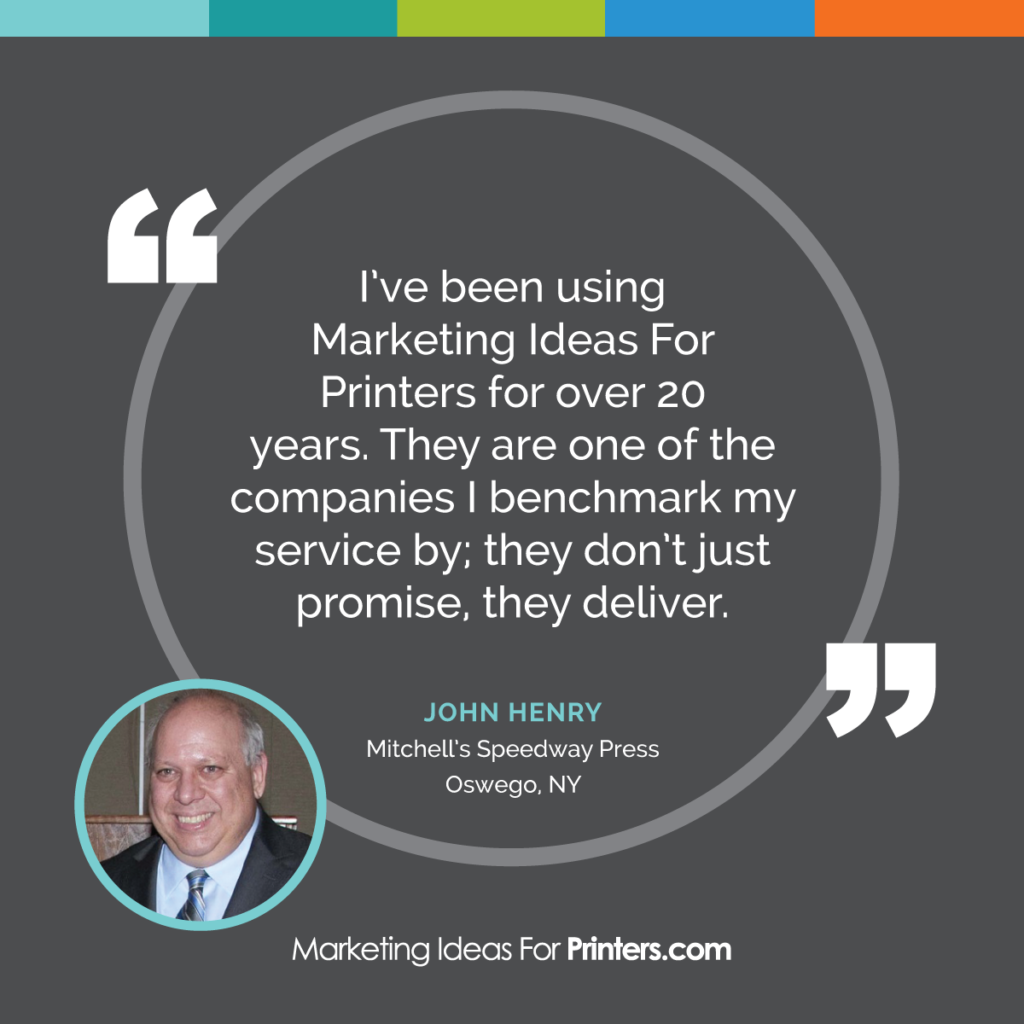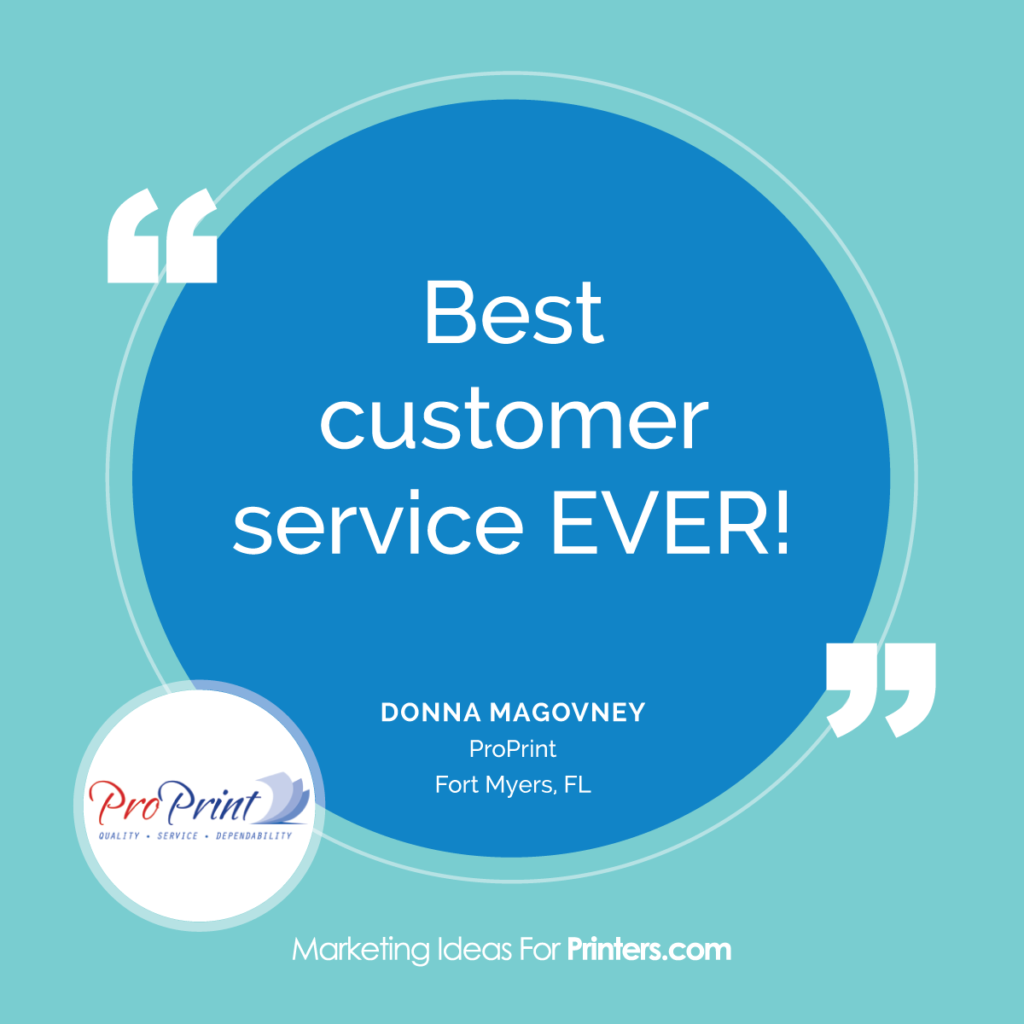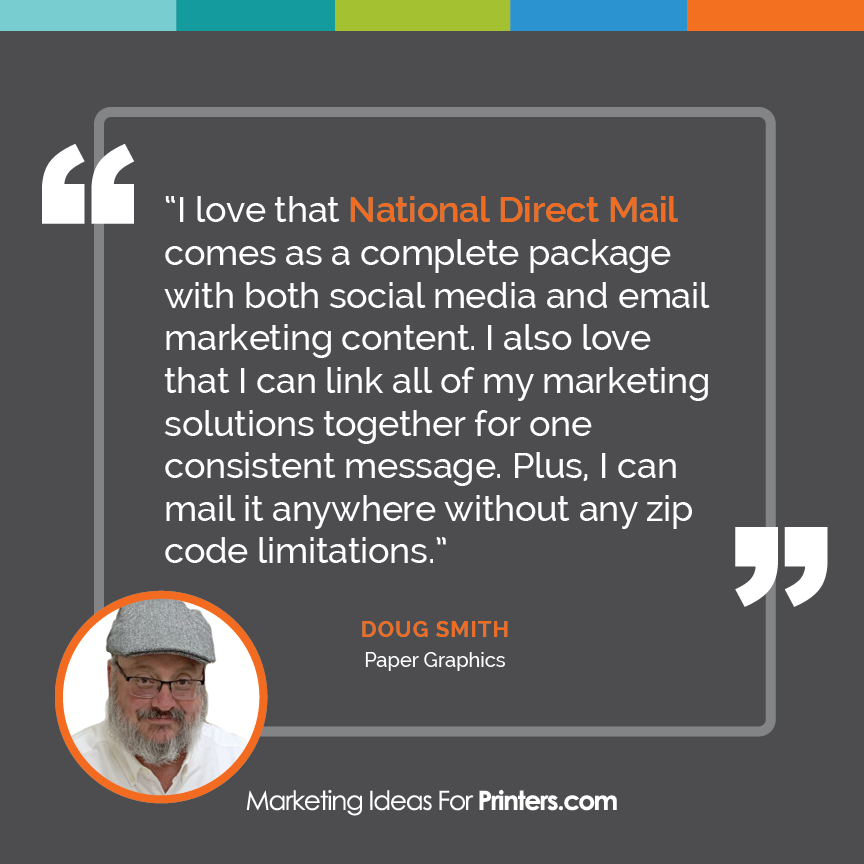Print-buyer testimonials are among the most powerful marketing tools your print business has. However, it’s essential to present them in just the right way so that visitors to your website will read and be impacted by them.
Sometimes, it’s not the words themselves that discourage potential print buyers from taking the time to read your testimonials. Often, it’s their layout that stands in your way. Thankfully, changing your testimonial layout is a simple fix that can offer maximum impact.
With a few simple tweaks, you can help your customer testimonials to pop and draw the attention your business deserves!
First Things First: What is Social Proof?
Social proof is a published review made by a person who has purchased a product or service and found it worthy.
It is a powerful marketing initiative because others are more likely to consider the product or service if others have purchased it and found it useful.
Social proof is highly effective at converting a browser into a consumer.
One of the most critical social proof mediums is customer testimonials or online product reviews. These types of social proof will help your print business realize results when well-written and formatted.
Social proof is proven to assist your print business in the following ways:
- Promoting trustworthiness
- Reinforcing value
- Increasing conversion rates
The concept of social proof is based on the bandwagon effect, a psychological principle that indicates that people are more likely to follow the leadership of others. By utilizing this concept via testimonials, you can increase your potential customer base by capitalizing on positive reviews.

Among the most powerful social proof initiatives today are:
- Customers photos
- Testimonials
- Brand reinforcement through logos
- Case studies
- Customer ratings/feedback
- Third-party reviews
- Seals of approval from relevant and respected organizations
- Number of social media followers/likes/shares/email subscribers
- Endorsements
How Can I Make My Testimonials Pop?
There are several dos and don’ts regarding the layout for effective testimonials. How you format customer reviews and testimonials will make the difference between whether or not a potential client commits to reading them or gets bored and moves on.
Since these testimonials are among the key pieces of evidence that increase the likelihood of a conversion, it’s important to package them just right.
Here are some of our top tips for ensuring your testimonials inspire potential print buyers to read on:
1. Break up the text.
Nothing turns a potential customer off quite like encountering a text wall.
While you may be tempted to take a wall of text and copy and paste it onto your website, this technique will undoubtedly cost you money in bored readers and lost sales.

Text walls have no natural flow, making them difficult for people to read. The language is often rambling, and the key product points can be difficult for a potential customer to find.
“People don’t read websites. They skim them.”
Donald Miller, author of Building a Storybrand
When a person encounters a text wall, they can quickly become overwhelmed, and rather than take the time to break it down to find what they are looking for, they simply move on to a different website.
But this doesn’t have to happen to you!
There are several ways you can break up the text to improve readability. These include shortening the testimonials to only a few key points, introducing spaces after every couple of sentences, and making use of highlighting or bolding for important things you want your potential customers to notice.
2. Give credit to the reviewer.
People want to know who is reviewing your product or service, so it is a good idea for you to make this information easy for them to find. Include the person’s full name, their business name, and a photo above their review if permitted.
It is vital that you get permission from the person who provided the testimonial before adding these details to their online review, as privacy laws do not allow you to use them without their consent. Providing potential customers with these details lends further credibility to your product or service and the testimonial or review.

3. Keep testimonials short and sweet.
Though lengthy reviews make you feel good, they are information overload for someone considering buying your product.
Since potential customers want to know how your product or service will benefit them, it’s to your advantage to pare overly wordy reviews down to the key takeaways a browser is looking for.
4. Make use of quotation marks and bolding.
Though this will sound like a simple thing, following this one tip is an easy way to add extra credibility to your testimonials: ensure you use quotation marks.
Quotation marks tell your potential customer that the words on the page aren’t just more copy provided by a hired writer but that they came from the heart of a satisfied customer.
In addition to this, you can simplify the reading process for the browser by bolding points that are of greater significance.
Does the testimonial contain a critical point that will be of importance to a potential customer?
Make sure those words stand out by highlighting or bolding them. This simple technique allows a potential customer to browse your testimonials and easily find the tidbits that are important to them and may more easily lead to a conversion for you.

5. Look for a piece of “copy gold” and place it strategically.
The more reviews you read, the more you realize that among all of them, you will find a set of phrases that can be considered “copy gold.”
Copy gold is essentially a singular sentence or phrase that perfectly sums up what you want potential customers to understand about your product or service.
When you find that piece of copy gold, be sure to put it above the review it came from as a subheading, ensuring you also include quotation marks.
How to Increase Customer Testimonials for Your Print Business
Sometimes the personal touch is the easiest way to get a testimonial from a satisfied customer.
If one of your print buyers shares that they are pleased with your product or service, ask them if they would be willing to provide a short statement as a review to be used on your website and in your marketing. If you have any customers who have become regulars, they are also excellent people to ask to share a testimonial for future customers to read.
If you are looking for novel ways to increase customer reviews, here are a few things you can do:
- End your emails with links to your Google Business Listing or Facebook page
- Place a decal on your print shop’s door inviting customer reviews
- Email your client base requesting testimonials (Psst… create a review template in Email Marketing For Printers you can send with each request)
- Ask your customer service staff to request reviews with each purchase
- Encourage reviews by reminding your customers that reviews promote business growth
- Make a Facebook post asking for customer reviews
- Provide notecards inviting customers to leave you a review
- Ask vendors to provide reviews for your business
Are the testimonials on your website formatted for maximum impact? If not, don’t despair. Follow these top five tips to make your testimonials pop and get your print business the attention it deserves.


